I am writing software that extends Circle-Rectangle collision detection (intersection) to include responses to the collision. Circle-edge and circle-rectangle are rather straight-forward. But circle-circle has me stumped.
For example, let two circles collide, one red and one green, in a discrete event simulation. We might have the following situation:

Immediately after they collide we could have:

Here RIP and GIP were the locations of the circles at the previous clock tick. At the current clock tick, the collision is detected at RDP and GDP. However, the collision occurred between clock ticks when the two circles were at RCP and GCP. At the clock tick, the red circle moves RVy downward and RVx rightward; the green circle moves GVy downward and GVx leftward. RVy does not equal GVy; nor does RVx equal GVx.

The collision occurs when the distance between the circle centers is less than or equal to the sum of the circles' radii, that is, in the preceding figure, d <= ( Rr + Gr ). At a collision where d < ( Rr + Gr ), we need to position the DPs back to the CPs before adjusting the circles' velocity components. In the case of d == ( Rr + Gr ), no repositioning is required since the DPs are at the CPs.
This then is the problem: how do I make the move back to the CPs. Some authors have suggested that one-half of the penetration, given by p in the following figure, be applied.

To me that is just plain wrong. It assumes that the velocity vectors of the two circles are equal that, in this example, is not the case. I think penetration has something to do with the computation but how eludes me. I do know that the problem can be recast as a problem of right similar triangles in which we want to solve for Gcdy and GCdx.

The collision itself will be modeled as elastic, and the math for the exchange of inertia is already in place. The only issue is where to position the circles at collision.
